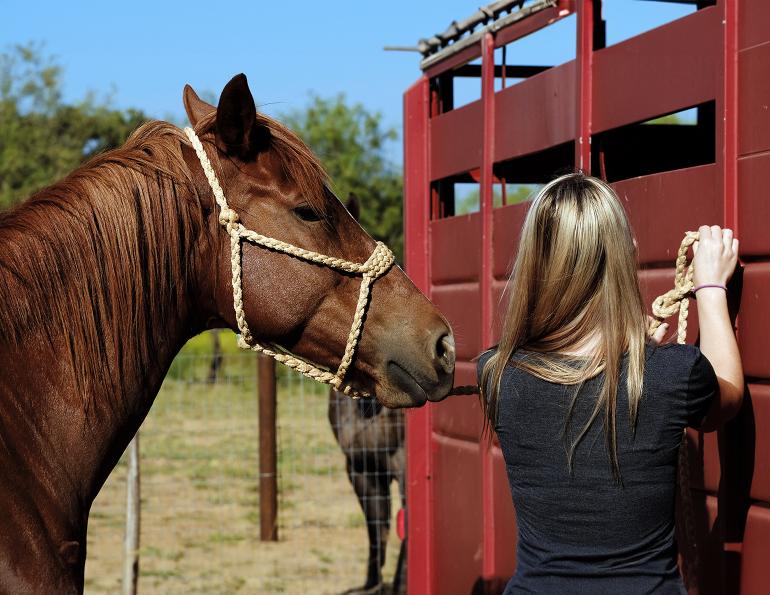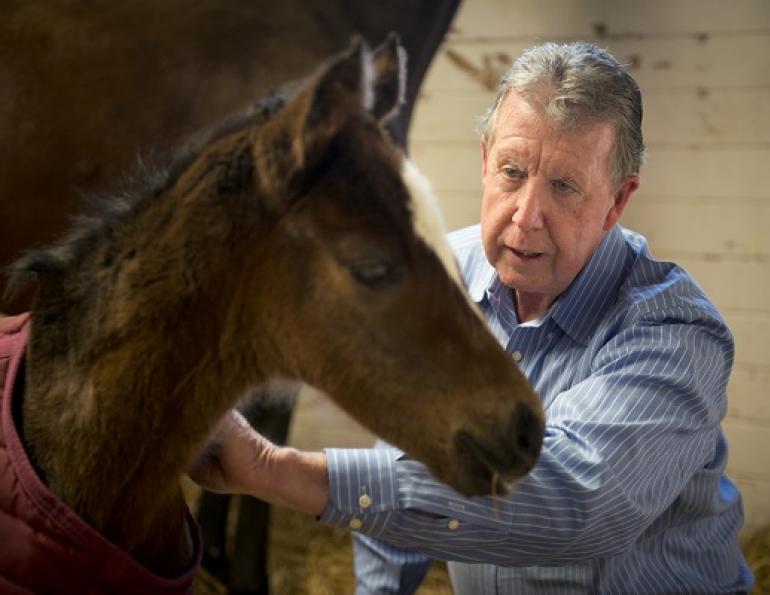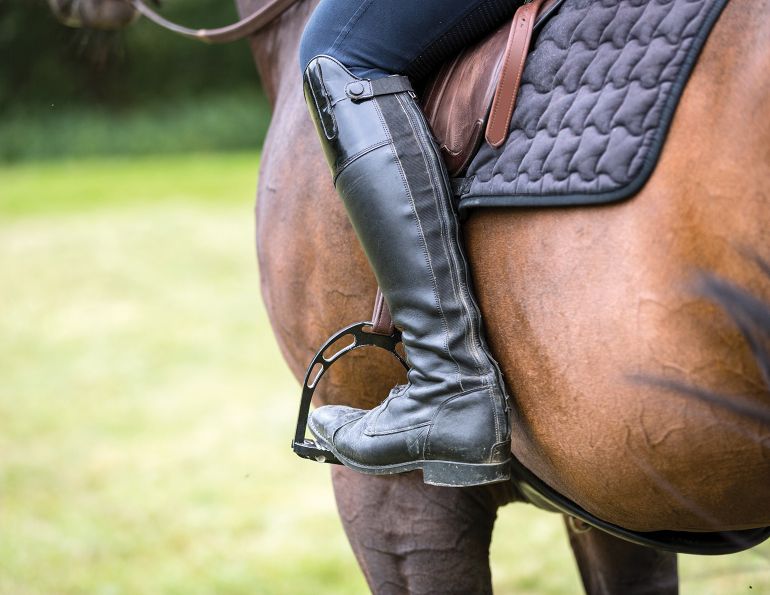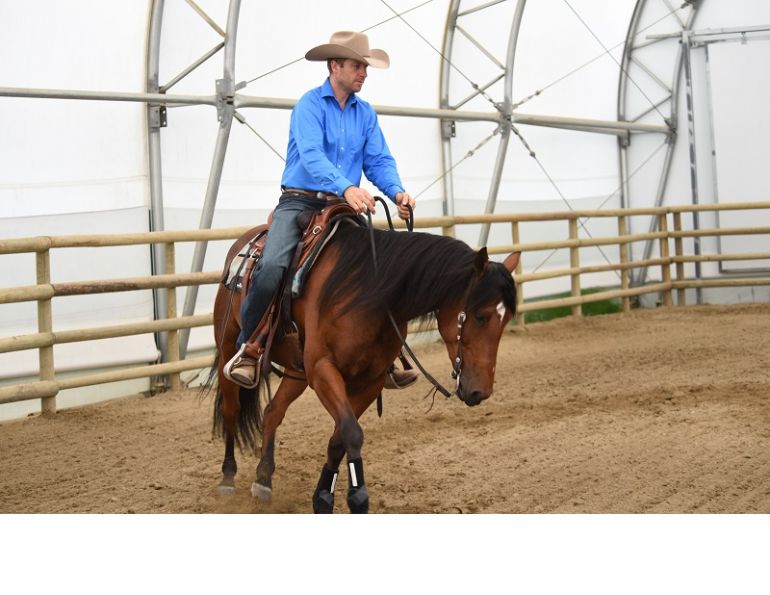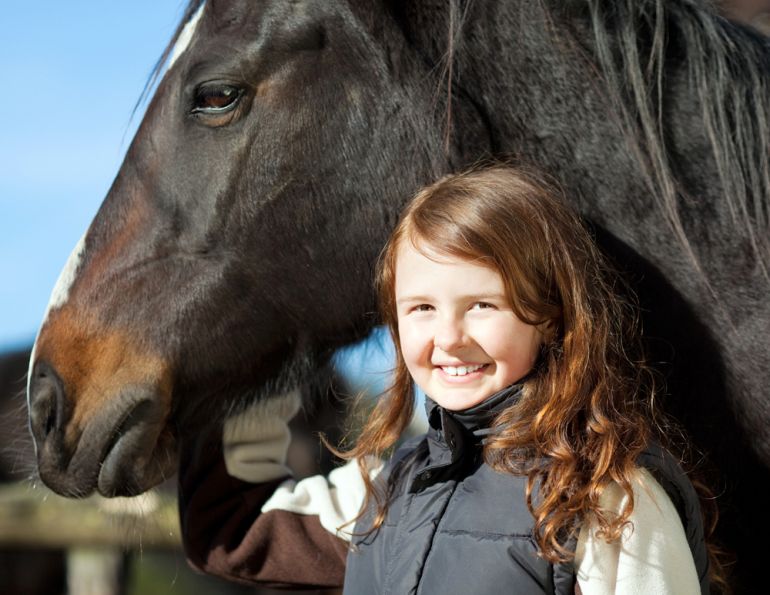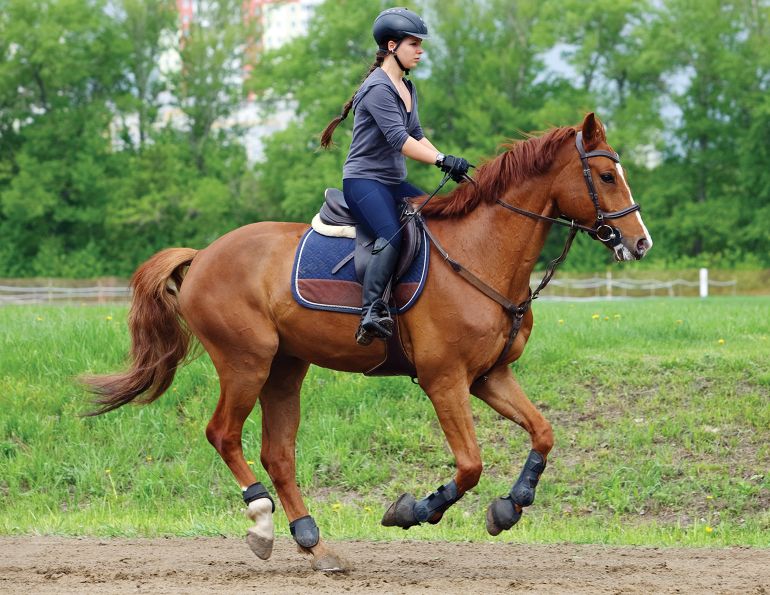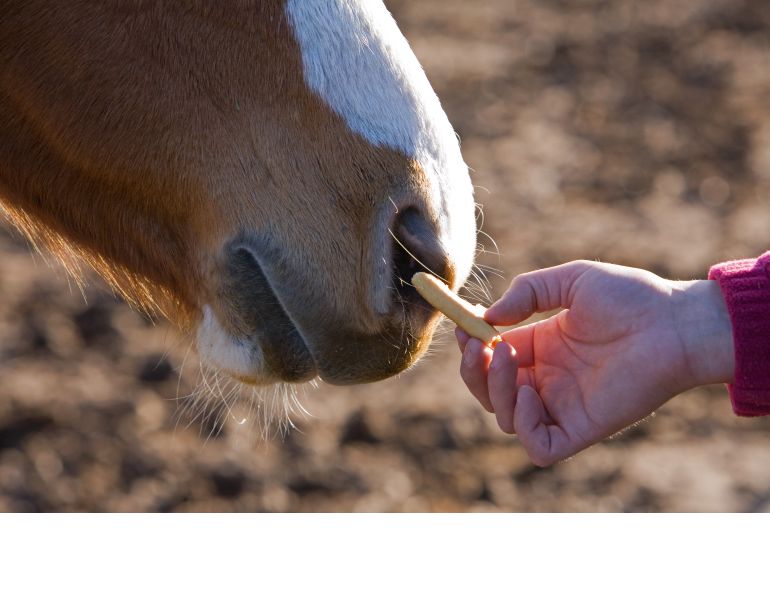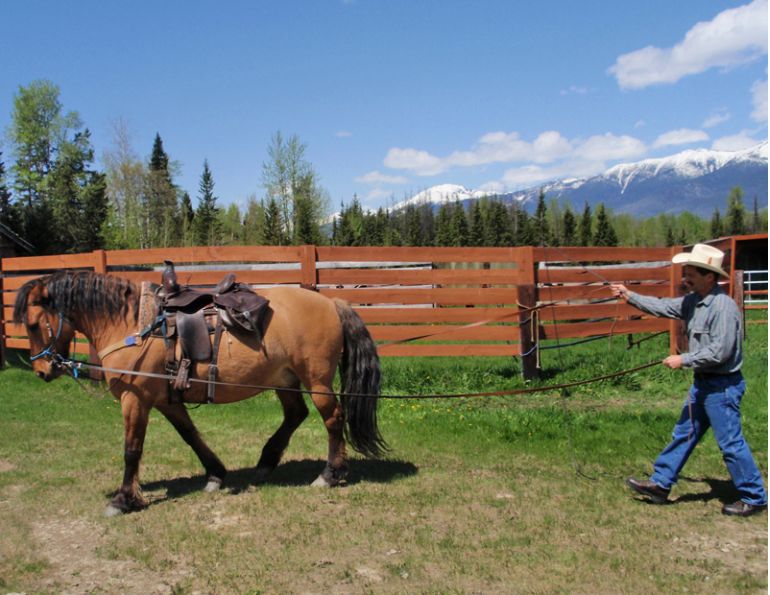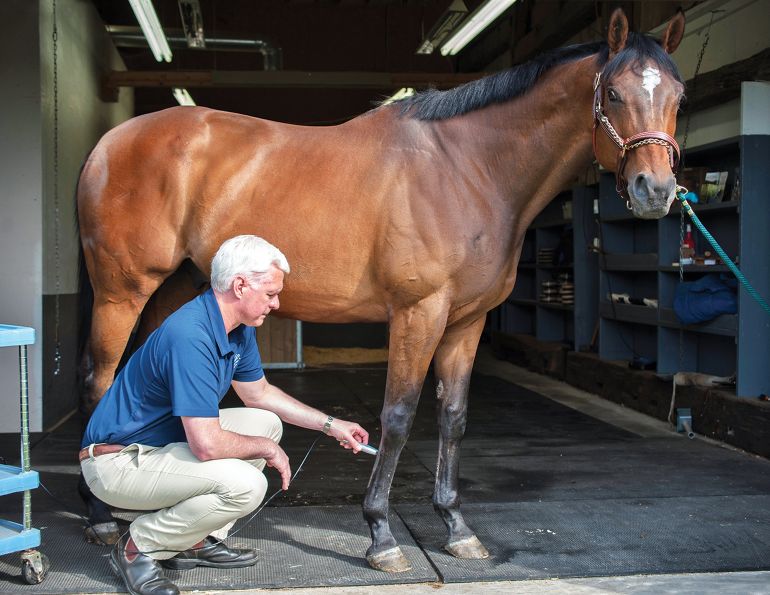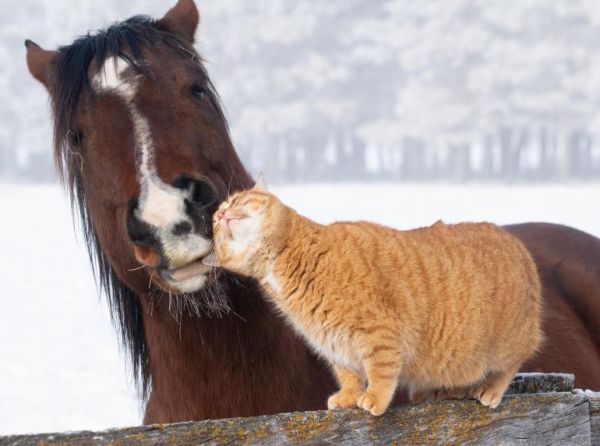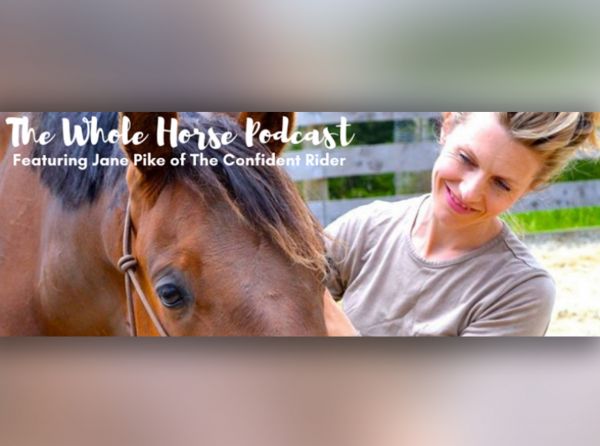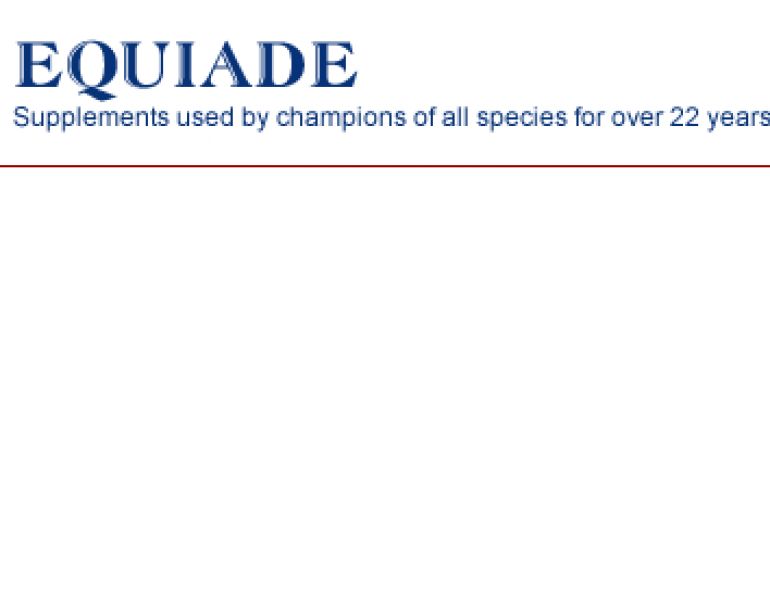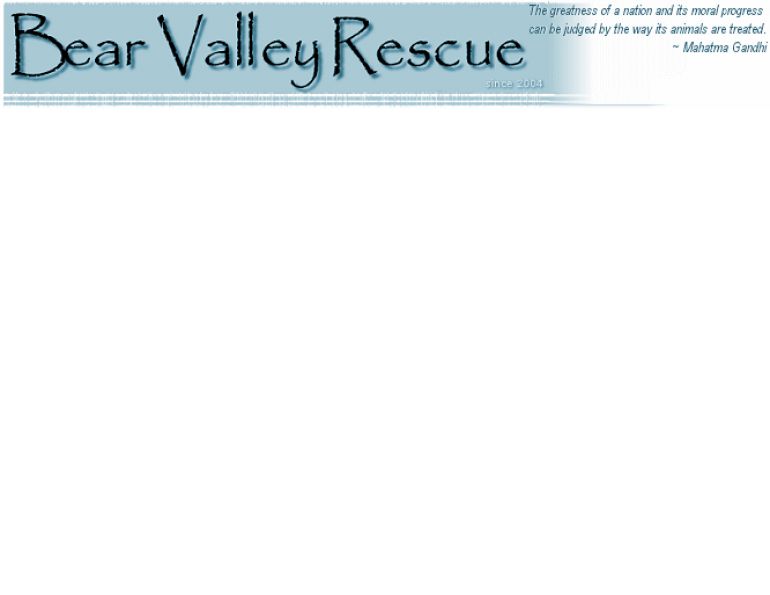By Will Clinging
Dealing with a horse that pulls back when tied is both stressful and dangerous, posing risks to the animal, equipment, and anyone nearby. But is pulling back a behaviour issue or a training problem? In reality, it’s both. Horses pull back for two main reasons: fear or because they can get away with it. While it may seem like a learned behaviour, the main cause is often fear.
It’s well-known that a horse’s strongest instinct is to flee. This flight response, however, varies in intensity depending on the horse’s stress level. Every horse has a unique threshold for stress, and when that threshold is crossed, the horse may experience panic — a complete loss of rational thought where their natural instincts take over and the urge to escape becomes overwhelming. In this state, the horse relies on its hooves to exit the situation as quickly as possible.
Ultimately, pulling back is a response to fear and the natural flight instinct. Recognizing a horse’s individual stress threshold and learning to identify early signs of stress can help prevent the behaviour from escalating into a more dangerous situation.
Before reaching that panic point, however, a horse will often show more subtle signs of stress. These can include shifting weight, pawing at the ground, or moving away a few steps before stopping — what I call a “green alert.” At this stage, the horse is still rational and able to control itself, but is experiencing enough discomfort to react physically. This early stage of stress is an important signal, as it indicates the horse is feeling uneasy but not yet in full flight mode.
Related: How to Deal with Tension in Horses
Related: Finding Solutions for Equine Behavioural Issues
An intermediate response to stress could be the horse moving frantically, becoming very pushy when he is not normally so, becoming increasingly distracted, and showing visible signs that he is highly stressed. His head will be up, eyes wide, and he could be snorting or whinnying. I call this an amber alert; this means that he is barely rational and very close to becoming overwhelmed. In an extreme stress situation the horse totally shuts down mentally. He is determined to escape at all costs and is not concerned at this point about injury to himself or to others. This is totally irrational behaviour solely devoted to basic survival at any cost. Obviously this is a red alert.
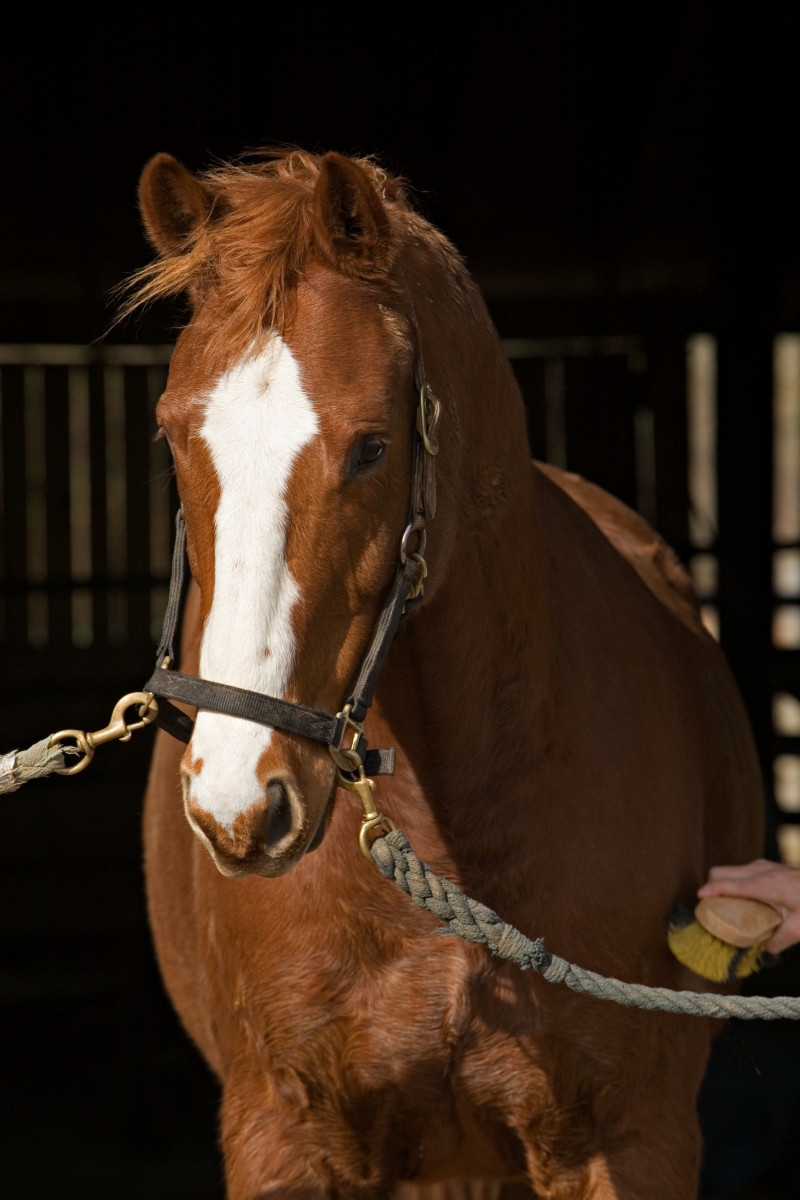
Watch your horse for signs that he may be getting stressed. Give him a chance to relieve his tension and think more rationally with movement to avoid a red alert. Photo: Christina Handley Photography
If the horse knows that he can move in a manner relative to how alerted his instincts have become, he can often deal with it in a deliberate manner. If the horse feels trapped or unable to move enough to give his mind time to override his instincts, the panic that leads to an extreme flight reaction can be triggered, and in this situation that reaction could be pulling back. We must always be aware of the amount of stress that our horse may feel in any given situation. It is not rocket science; he will tell us if we listen to him. Remember: green, amber, or red alert. Understanding the amount and kind of stress you are putting your horse under should give you a reasonable idea about whether or not the horse will be successful in dealing with it. It is all very predictable if you pay attention to the signs.
If you teach your horse to deal with increasing amounts of stress during the training process and give him viable options to deal with the stress imposed, the horse’s threshold will increase. For example, when I start a horse I usually do my initial teaching with the horse moving unrestrained in a training pen. By allowing freedom of movement I am always giving the horse the option of movement as a coping mechanism for the amount of stress I impose. When I add equipment such as a halter or bridle, I effectively limit the horse’s ability to move, therefore increasing his stress level. If I limit the amount of movement to the point where the horse feels trapped, I have created a situation that has become a red alert.
Related: Trigger Points in Horses
Related: How to Teach Your Horse Mounting Manners
When I tie up a horse I have effectively taken away his major coping mechanism which is movement. If I allow movement when I are causing stress, I am always allowing the horse an option. The more stress I present or represent, the more movement I must accept from the horse in order for him to deal with the situation. The only time I will intentionally stop his movement is after the horse has panicked; I will try to stop him so that he can regain his composure and find a more acceptable response. I will also take note of what caused the panic and try to keep the stress factors below the level that caused the extreme reaction.
In any situation, if the horse is exhibiting signs that he is mildly stressed (green alert) I will continue after taking note of how well he is coping. If the signs escalate (amber alert) I cannot proceed until the intensity of his actions decreases back to green alert. If I fail to notice how stressed the horse has become and I continue, then I have been the cause of the horse’s red alert frame of mind.
Related: Turn Pushy Horses Around with Three Simple Lessons
Related: Equitation Science
For example, if I have a horse tied up and he is mildly fidgety I will proceed with caution, aware of what I may possibly cause. If I then try to saddle that tied horse and his actions intensify, I must stop or untie him so he can increase his movement to compensate for the amount of stress he feels. If I ignore the signs and do not untie him, continue to saddle him, and he blows up, whose fault is it? I need to make sure that the horse can easily cope with whatever amount of stress I impose without being tied before I can expect him to deal with it when he is tied.
The solution to pulling is to prepare your horse to deal with stress by using movement. Allow him the time to deal with what is stressing him and then he will stand quietly by himself. When he is standing still without coercion he is ready to deal with being tied. He should not be tied when introducing anything new in terms of stress — this is when he needs to be able to move his feet the most. Being tied up is not a natural thing for a horse to deal with. All his instincts tell him that being trapped is life threatening. Do not trap your horse by tying him until you are aware of what he can handle in terms of stress. If he cannot handle much when he is not tied, it will not get better if you restrain him. If he already pulls you have a fair bit of retraining to do before you can change the behaviour.
Related: Complicated Horses
Related: A Guide to Clicker Training
Main Photo: A horse’s natural instinct is to avoid being trapped and to run when he feels fear. If you do not teach the horse how to deal with stress and increase his stress threshold, he may learn to pull back when tied. Credit: Shutterstock/CCTM



